How To Find Surface Area Of All Shapes
half-dozen.v: Expanse, Surface Area and Volume Formulas
- Folio ID
- 51016
Area formulas
Let \(b\) = base
Permit \(h\) = tiptop
Let \(s\) = side
Allow \(r\) = radius
| Shape Proper noun | Shape | Surface area Formula |
|---|---|---|
| Rectangle |  | \(A=bh\) |
| Square |  | \(\begin{array}{l} |
| Parallelogram |  | \(A=bh\) |
| Triangle |  | \(A=\dfrac{1}{2} b h\) |
| Circle |  | \(A=\pi r^{two}\) |
| Trapezoid |  | \(A=\dfrac{one}{2} h\left(b_{1}+b_{ii}\correct)\) |
Surface Area Formulas
Variables:
\(SA\) = Area
\(B\) = surface area of the base of the figure
\(P\) = perimeter of the base of the effigy
\(h\) = height
\(s\) = camber tiptop
\(r\) = radius
| Geometric Figure | Surface Area Formula | Area Meaning |
|---|---|---|
| | \(S A=ii B+P h\) | Find the area of each face. Add up all areas. |
| | \(South A=B+\dfrac{i}{two} s P\) | Find the area of each face. Add up all areas. |
| | \(South A=two B+ii \pi r h\) | Find the area of the base, times two, then add the areas to the areas of the rectangle, which is the circumference times the elevation. |
| | \(S A=4 \pi r^{ii}\) | Detect the area of the great circumvolve and multiply it past iv. |
| | \(S A=B+\pi r Southward\) | Discover the area of the base and add the product of the radius times the slant peak times PI. |
Volume Formulas
Variables:
\(SA\) = Surface Area
\(B\) = area of the base of operations of the effigy
\(P\) = perimeter of the base of the effigy
\(h\) = height
\(due south\) = slant height
\(r\) = radius
| Geometric Figure | Book Formula | Volume Pregnant |
|---|---|---|
| | \(Five=B h\) | Find the surface area of the base and multiply information technology by the height |
| | \(V=\dfrac{1}{3} B h\) | Find the area of the base and multiply information technology by 1/three of the height. |
| | \(Five=B h\) | Find the area of the base and multiply information technology by the height. |
| | \(V=\dfrac{4}{3} \pi r^{3}\) | Notice the surface area of the slap-up circle and multiply it by the radius so multiply information technology by 4/3. |
| | \( V=\dfrac{1}{3} B h\) | Detect the area of the base and multiply it by 1/3 of the meridian. |
Example \(\PageIndex{1}\)
Find the surface area of a circle with bore of 14 feet.

Solution
\[\begin{aligned}A&=\pi r^{2}\\&=\pi(vii)^{two}\\&=49 \pi \text {anxiety}^{2}\\&=153.86 \text {feet}^{two} \end{aligned} \nonumber \]
Instance \(\PageIndex{two}\)
Notice the area of a trapezoid with a top of 12 inches, and bases of 24 and x inches.

Solution
\[\begin{aligned} A&=\dfrac{one}{two} h\left(b_{i}+b_{two}\right)\\ &=\dfrac{i}{2}(12)(24+10)\\ &=6(34)\\ &=204 \text { inches}^2 \cease{aligned}\nonumber \]
Case \(\PageIndex{iii}\)
Discover the surface area of a cone with a slant height of 8 cm and a radius of 3 cm.

Solution
\[\begin{aligned}
SA&= B+\pi rS\\ &=\left(\pi r^{2}\right)+\pi rs\\ &=\left(\pi\left(3^{ii}\right)\right)+\pi(iii)(eight) \\
&=ix \pi+24 \pi\\ &=33 \pi \text {cm}^{2}\\ &=103.62 \text {cm}^{two}
\terminate{aligned} \nonumber \]
Case \(\PageIndex{4}\)
Discover the surface area of a rectangular pyramid with a slant height of 10 yards, a base width (b) of 8 yards and a base length (h) of 12 yards.

Solution
\[\begin{aligned}
SA&=B+\dfrac{1}{2} southward P\\
&=(b h)+\dfrac{ane}{2} south(2 b+two h) \\
&=(8)(12)+\dfrac{1}{ii}(10)(2(viii)+2(12)) \\
&=96+\dfrac{one}{2}(10)(xvi+24) \\
&=96+v(twoscore) \\
&=296 \text { yards}^{ii}
\stop{aligned} \nonumber \]
Example \(\PageIndex{5}\)
Find the volume of a sphere with a bore of 6 meters.

Solution
\[\begin{aligned} V&=\dfrac{4}{iii} \pi r^{3}\\ &=\dfrac{4}{three} \pi(3)^{3}\\ &=\dfrac{4}{3}(27 \pi)\\ &=36 \pi \text { meters }^{iii}\\ &=113.04 \text { meters }^{3} \terminate{aligned} \nonumber \]
Partner Activity 1
- Notice the surface area of a triangle with a base of operations of forty inches and a peak of 60 inches.
- Observe the area of a square with a side of 15 feet.
- Find the surface area of Earth, which has a diameter of 7917.5 miles. Use three.fourteen for PI.
- Find the volume of a can a soup, which has a radius of 2 inches and a pinnacle of 3 inches. Employ three.xiv for PI.
Extension: Methods of Pedagogy Mathematics
Role 1
Assessments:
- What is the Difference between Formative and Summative Assessments? Which One is More Important?
- Formative Assessment Examples and When to Use Them
- Summative Assessment Examples and When to Utilize Them
Part 2
Write a Formative and Summative Assessment for Your Lesson Programme
Part 3
Make certain you lot are working on Khan Academy throughout the semester.
Source: https://math.libretexts.org/Courses/College_of_the_Canyons/Math_130:_Math_for_Elementary_School_Teachers_%28Lagusker%29/06:_Geometry/6.05:_Area_Surface_Area_and_Volume_Formulas
Posted by: sowellholed1992.blogspot.com

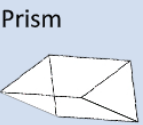
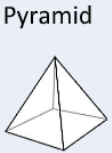
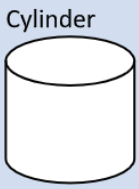
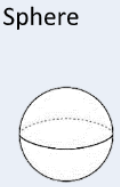
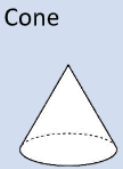
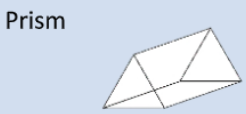
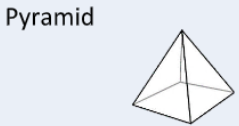
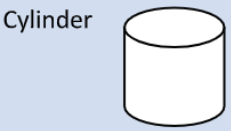
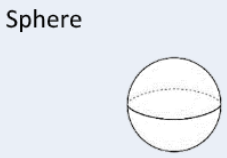
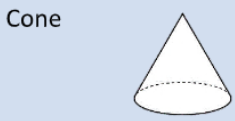

0 Response to "How To Find Surface Area Of All Shapes"
Post a Comment